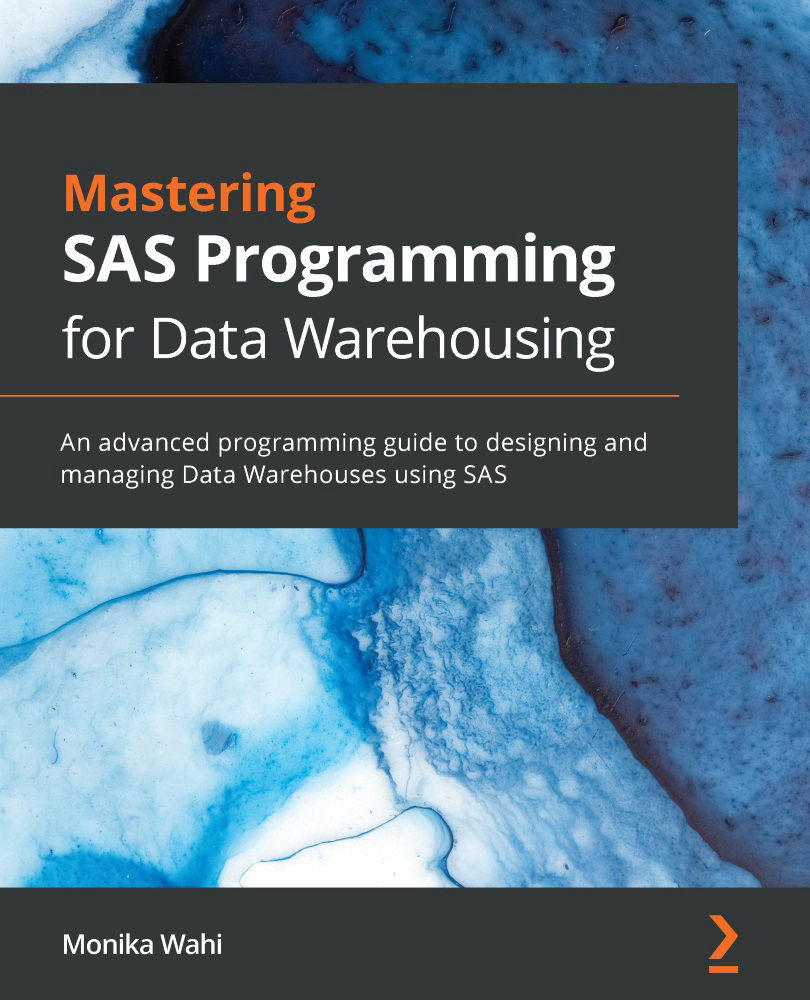Reading data extracts into SAS
SAS as a program provides a lot of different functionalities for handling datasets in any format. However, this leads to some complexity in coding, even when using SAS's native dataset formats. This section covers the following:
SAS's native dataset format,
*.SAS7bdatHow to optimally use SAS's
WORKdirectoryHow to specify and use
LIBNAMEfor reading SAS data from a physical locationHow to read datasets in
*.SAS7bdatformat into SAS
This section will give you working knowledge of how to use LIBNAME to read in datasets in *.SAS7bdat format that are stored outside of the SAS environment.
Understanding SAS datasets
Up until now, when talking about data storage in SAS, we were talking mainly about reading data into the working memory of SAS. When a SAS session is started and data is read into SAS's working memory, it is said to be in the WORK directory. This directory will go away when the session ends...


































































